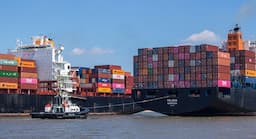SUSTAINABLE WAREHOUSE MANAGEMENT SYSTEM
The idea of a sustainable warehouse management system has grown in importance as sustainability has become a top concern for many business owners. Numerous steps can be implemented in supply chain logistics to cut waste and improve how environmentally friendly operations are.
A manufacturer can link the process warehouses by constructing a warehouse that emphasizes environmentally friendly working practices. Here is a list of things you may do to optimize your warehouse, ranging from inexpensive yet very effective options to simple solutions.
1. LED LIGHTING AND ENERGY EFFICIENCY AS A TOP PRIORITY
Given the importance of the warehousing sector, the use of only LED lighting is the first indication that a warehouse values sustainability. While using the same amount of energy, LED lighting lasts up to 25 times longer than standard incandescent bulbs.
2. AUTOMATION
There are numerous options available that aren't expensive to implement, and incorporating automation solutions into warehouse procedures can go a long way toward building a more sustainable system of operation.
Systems for automating warehouses enable far greater precision in product management, recall, etc. As a result, there are significant time, energy, and resource savings compared to what would otherwise be needed to do these management duties. The decrease in paper use that can be achieved when businesses migrate to digital solutions like RFID (radio-frequency identification) and bar-coding technologies is a good example.
A few further automated options are:
• Order selecting innovations
• Secure warehouse access control systems using the cloud
• Automated systems for storing and retrieving data (ASRS)
As these technologies enable maximized use of vertical space, they can often minimize the negative environmental effects of building a new facility while optimizing the effective use of a company's current warehouse space as it expands.
3. Warehouse Management System (WMS) :
The effectiveness of warehouse operations is crucial to a supply chain's overall success, regardless of the industry it serves. Increasing efficiency frequently results in increased sustainability since it makes speedy, precise shipping possible.
Utilizing warehouse management solutions will help the logistics network operate more efficiently. Software that regulates and streamlines warehouse operations from the entry of products to their exit is what makes up a warehouse management system.
Additional advantages of warehouse management software include:
- Live inventory management for optimal control over items and materials
- Omnichannel order management of B2B and e-commerce sales
- Real-time planning and administration of scheduling, production, and resources
- End-to-end traceability for accuracy in tracking particular materials, batches, and more
- When used in conjunction with automation technologies, warehouse management systems not only maximize operational efficiency but also present several opportunities to lessen the environmental impact of the warehouse.
4. OPTIMAL WAREHOUSE DESIGN
Even if the warehouse of your choice hasn't yet implemented some of the more complex technologies, like ASRS, think about whether it is set up to do so soon. Consider the design of the space and whether it will permit such upgrades in addition to addressing the warehouse's ambitions to move towards greater sustainability.
Planning the layout of the warehouse carefully is essential for increasing operational effectiveness and for ensuring the viability of the integration of new technologies and services. Vendor Tech advises carrying out this by the subsequent means:
• Giving each site in your warehouse a distinctive name (Latin alphabet). Learn more about that here.
• You can create labels with barcodes once you know the names of every location.
• Print the labels, then stick them in every warehouse.






